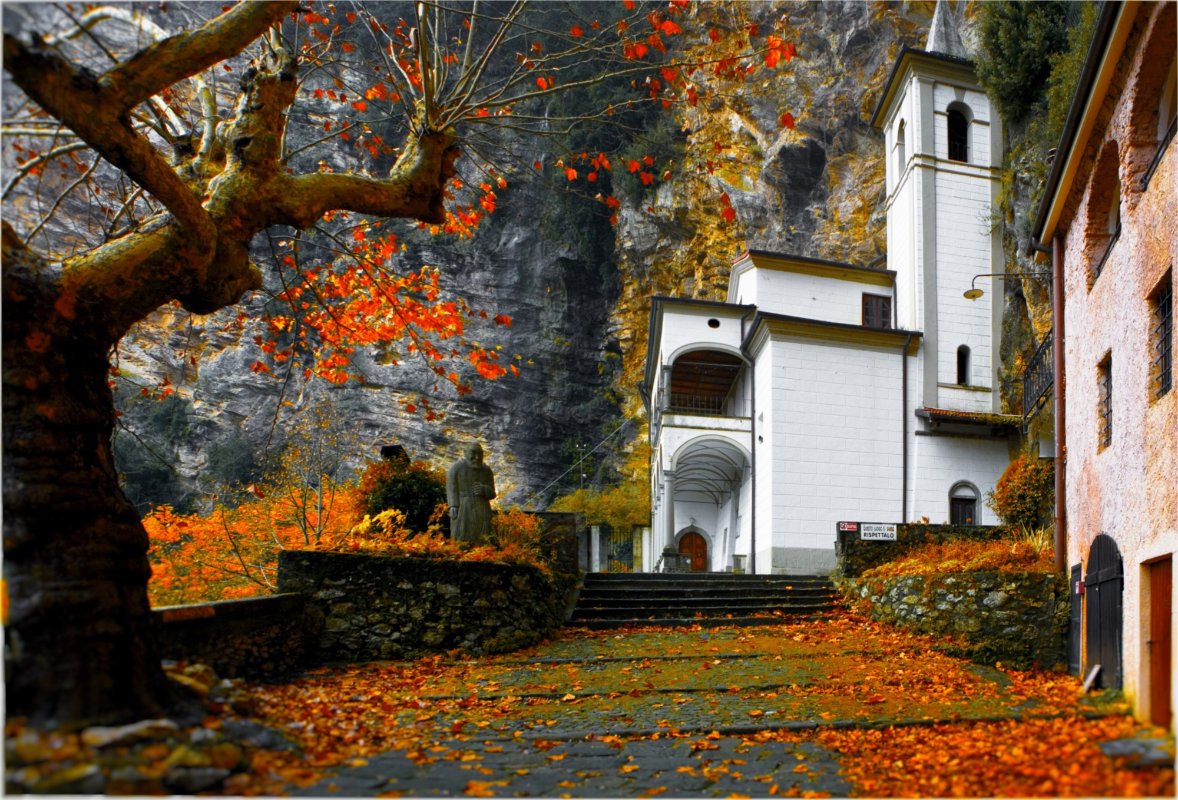Description
Religious site of national importance. Situated close to a rocky overhang and carved almost entirely into the rock, the shrine was built where the story goes of the apparition of the Madonna to a girl from Calomini around the 7th century. The sacred image, sketched in a willow wood statue that still exists and is an object of devotion, is venerated under the name Madonna della Penna. The month of May is traditionally dedicated to Our Lady and sees the presence of many people who make the pilgrimage up to the Hermitage. The living rock is still visible in the presbytery and sacristy, while the primitive little church underwent various phases of enlargement and enrichment of structures and vestments as the fame and veneration of the Virgin of the Cave grew, beginning in the 14th century.
In the early 18th century, the double colonnade of the facade was built and the grotto enlarged to accommodate the sacristy. The hermits of Calomini took care of it for five centuries, until 1868. Since then the parish priests of the neighboring towns, as traditional administrators, decided to take over directly the task of promoting the cult of Mary Most Holy. By a decree of the bishop of Massa dating back to 1941, the custody of the shrine was finally entrusted to the Capuchin P.P.'s of Lucca, who, in the person of a confrere, have been providing for more than fifty years to preserve what a pure devotion to Mary wanted to rise on this cliff.
Since 2011 the shrine, by the express wish of Archbishop Benvenuto Italo Castellani, Archbishop of Lucca, has been entrusted to the religious family of the "Disciples of the Annunciation," a community from the Diocese of Prato. During the summer period the hermitage is open every day. In other months only on Sundays, during Mass times. There is no specific time for visiting.

